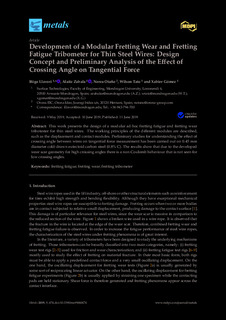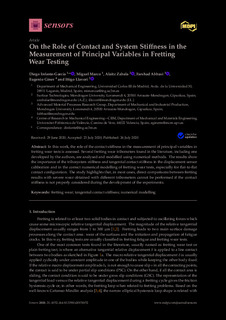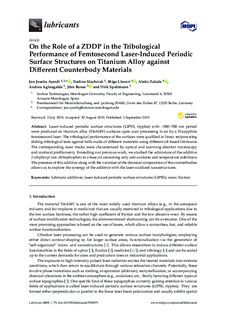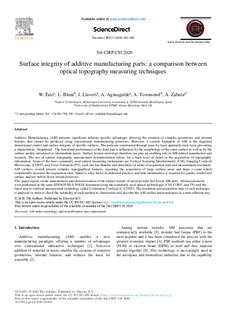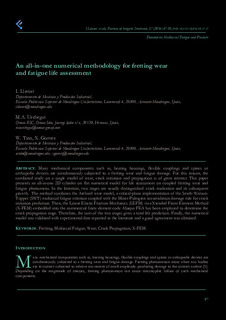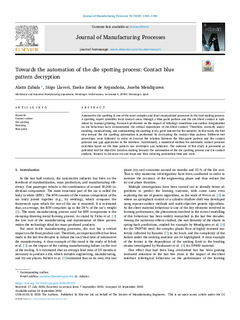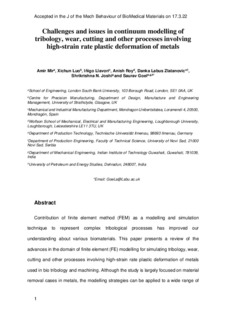Search
Now showing items 1-10 of 30
Development of a Modular Fretting Wear and Fretting Fatigue Tribometer for Thin Steel Wires: Design Concept and Preliminary Analysis of the Effect of Crossing Angle on Tangential Force
(MDPI AG, 2019)
This work presents the design of a modular ad-hoc fretting fatigue and fretting wear tribotester for thin steel wires. The working principles of the diffrent modules are described, such as the displacement and contact ...
On the Role of Contact and System Stiffness in the Measurement of Principal Variables in Fretting Wear Testing
(MDPI AG, 2020)
In this work, the role of the contact stiffness in the measurement of principal variables in fretting wear tests is assessed. Several fretting wear tribometers found in the literature, including one developed by the authors, ...
On the Role of a ZDDP in the Tribological Performance of Femtosecond Laser-Induced Periodic Surface Structures on Titanium Alloy against Different Counterbody Materials
(MDPI, 2019)
Laser-induced periodic surface structures (LIPSS, ripples) with ~500–700 nm period were produced on titanium alloy (Ti6Al4V) surfaces upon scan processing in air by a Ti:sapphire
femtosecond laser. The tribological ...
Surface integrity of additive manufacturing parts: a comparison between optical topography measuring techniques
(Elsevier B.V., 2020)
Additive Manufacturing (AM) presents significant industry-specific advantages allowing the creation of complex geometries and internal features that cannot be produced using conventional manufacturing processes. However, ...
An all-in-one numerical methodology for fretting wear and fatigue life assessment
(Gruppo Italiano Frattura, 2016)
Many mechanical components such as, bearing housings, flexible couplings and spines or orthopedic devices are simultaneously subjected to a fretting wear and fatigue damage. For this reason, the combined study on a single ...
A coupled 3D wear and fatigue numerical procedure: Application to fretting problems in ultra-high strength steel wires
(Elsevier Ltd., 2021)
This work presents a coupled 3D wear and fatigue numerical procedure for fretting problems in ultra-high strength steel wires that combines Archard’s wear equation with the Smith–Watson–Topper parameter to predict crack ...
Towards the automation of the die spotting process: Contact blue pattern decryption
(Elsevier Ltd., 2020)
Automotive die spotting is one of the most complex and least standardized processes in the tool making process. A spotting expert identifies local contact areas through a blue-paste pattern and the die/sheet contact is ...
Numerical study of advanced friction modelling for sheet metal forming: influence of the die local roughness
(Elsevier Ltd., 2022)
Numerical simulation of sheet metal forming processes has become indispensable in the last decades. Although the complexity of the frictional behaviour is identified as a key factor for the prediction accuracy, the industry ...
Numerical methodology based on fluid-structure interaction to predict the residual stress distribution in glass tempering considering non-uniform cooling
(Elsevier, 2022)
In this paper a novel numerical methodology for calculating non-uniform residual stress distributions during the glass tempering process is presented. Tempering techniques lead to non-uniform heat transfer rates causing ...
Challenges and issues in continuum modelling of tribology, wear, cutting and other processes involving high-strain rate plastic deformation of metals
(Elsevier Ltd., 2022)
Contribution of finite element method (FEM) as a modelling and simulation technique to represent complex tribological processes has improved our understanding about various biomaterials. This paper presents a review of the ...


